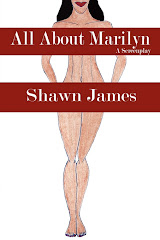Manolo Blahnik.
Jimmy Choo.
Prada
Gucci.
Bergdorf Goodman.
That’s the only time you’ll ever see those designer names featured as the subject in my writing.
A lot of writers think adding the names of designers in their stories will make their writing trendy and hip. However, smart readers see through this gimmick and know it’s just another example of really bad writing.
Using designer brand names to describe what a character is wearing isn’t creative writing, it’s what a lazy writer does to avoid writing details in a story. It’s easier for a bad writer to describe a character wearing an navy Armani suit and tan Manolo Blahnik sandals than to describe them wearing a tailored navy double-breasted Italian business suit, crisp ivory cotton blouse and Bone colored Italian leather strappy sandals.
What’s the difference between the two descriptions? It’s in the readers’ imagination. In one description the reader sees the labels the character is wearing but learns next to nothing about them as a person. The opportunity to develop the character is lost.
However, the more detailed description seems vague on paper, but readers have a clearer picture of who the character is as a person in their minds. The words tailored and crisp give the reader an image of the character being a well-dressed person. These adjectives tell the reader something about who the character is, what they are what they’re doing and why they’re doing it.
Without the labels getting in the way readers can make their own story regarding the character. And in a novel, it’s the story the reader creates reading between the lines that makes what’s on the page important.
Personally I hate name-dropping and do my best to avoid it in my stories. I feel it cheats the reader out of an opportunity to use their imagination. I don’t want my readers to have their reading experience constantly interrupted by a commercial. Besides, these designers aren’t paying me royalties, so why should I give them a free endorsement?
Tuesday, July 22, 2008
Subscribe to:
Comments (Atom)





